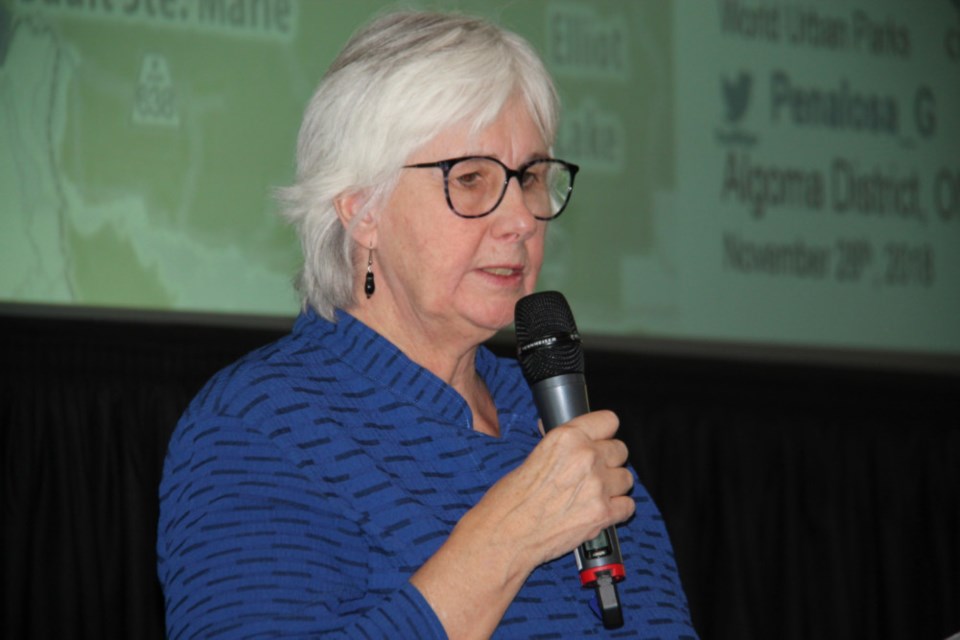Algoma Public Health (APH) officials knew it was coming, but since the province revealed more details of how it intends to whittle down the number of public health units in Ontario from 35 down to 10 through amalgamation, and only two units for northern Ontario, APH’s top doctor has spoken of her concerns with the plan.
APH, it has been announced, will be grouped with health units in Nipissing (part of Renfrew), Muskoka (part of the Simcoe-Muskoka District Health Unit), North Bay, Parry Sound, Sudbury, Timiskaming and Porcupine into a northeastern Ontario mega-unit.
Dr. Marlene Spruyt, APH medical officer of health and CEO, speaking to SooToday, shared some concerns as to including the northern part of the Simcoe-Muskoka District Health Unit in the proposed, new expanded health unit region.
“It’s just a different type of community and culture than northeastern Ontario, and compare that with, perhaps, the needs of the Porcupine health unit, which is extremely remote and goes all the way up to James Bay...when something so dispersed as this comes along, inevitably funds are going to shift where there’s a greater population demand and yes, I’m concerned the funding for northeastern Ontario is going to be demanded by a needy group in Muskoka,” Spruyt said.
“A large number of people from Toronto spend the summer in Muskoka, so that’s just a huge chunk of work that has to be done to inspect restaurants, pools, whatever.”
“If you’re going to have an effective workforce you have to have some way of bringing that workforce together and make them feel like they’re all part of the same team...even in our own health unit it’s three hours to Wawa. Those people in Wawa will never feel like they’re colleagues and work buddies with the folks in Muskoka but you want that to happen. It will be hard to build effective teams with that distance. It will cost more money to bring them together, and more time,” Spruyt said.
However, Spruyt added “these (10 new health unit areas) are proposed. There’s nothing in legislation yet.”
“There will be opportunity, we are told, for some feedback, but it is somewhat concerning to us that Muskoka (has been included)...the government has it on a tight timeframe. This is going to be hard to do.”
The province wants the boards for each of Ontario’s 10 new health boards in place by 2020-2021.
“In addition to that, it makes our area even larger. We’re going to go from White River in the western end of Algoma all the way down to the area just south of Gravenhurst, which is the line between Muskoka and Simcoe. We haven’t been given a map of the government’s plans so we’re not exactly clear what they mean by Muskoka, we assume it’s the whole district. We’re sort of working in a fog but you have to find a way,” Spruyt said.
Administrative job cuts are also inevitable, Spruyt said.
“Eventually there will be less positions, there’s no doubt about that, about two or three years down the road...you might have payroll in one, and accounts receivable in North Bay for example, so that the Sault, Timmins, Sudbury and North Bay would all have some core functions in them as part of the distributed model.”
“They’re all unionized environments as well. It’s complex.”
It won’t be easy for staff of other health units either, Spruyt noted.
“Simcoe-Muskoka have been doing their work but now they’re going to be split in half, and some of the staff are going to be sent to York, and others sent north, so I don’t think the staff there are going to be thrilled with it either...we don’t understand the logic behind it.”
There is some good news, however, for APH in the government’s proposal for the 10 new public health units, Spruyt said.
“We were concerned that they might try to make only one for northern Ontario (combining northeastern and northwestern Ontario into one unit) and that would have been too complex and geographically too large.”
“We in the northeast have already been working together in what we call the Northeastern Health Collaborative for about the last year and a half with some one time funding from the Ministry of Health to look at aligning what things we do are in common and to avoid duplication across the north, such as smoking cessation for instance, so we’re beginning to move forward on consolidating some of those operations because we knew our budgets were going to be flatlined heading into the future, so bringing five of us together in the northeast is a reasonable decision,” Spruyt said.
Spruyt said there have been three teleconference calls with her partners across the northeast this week alone regarding the new northeastern mega-unit, anticipating taking part in a teleconference with all 35 public health unit officials late Wednesday afternoon.
Spruyt emphasized the boards want to work with the province, not against it, during the transition.
